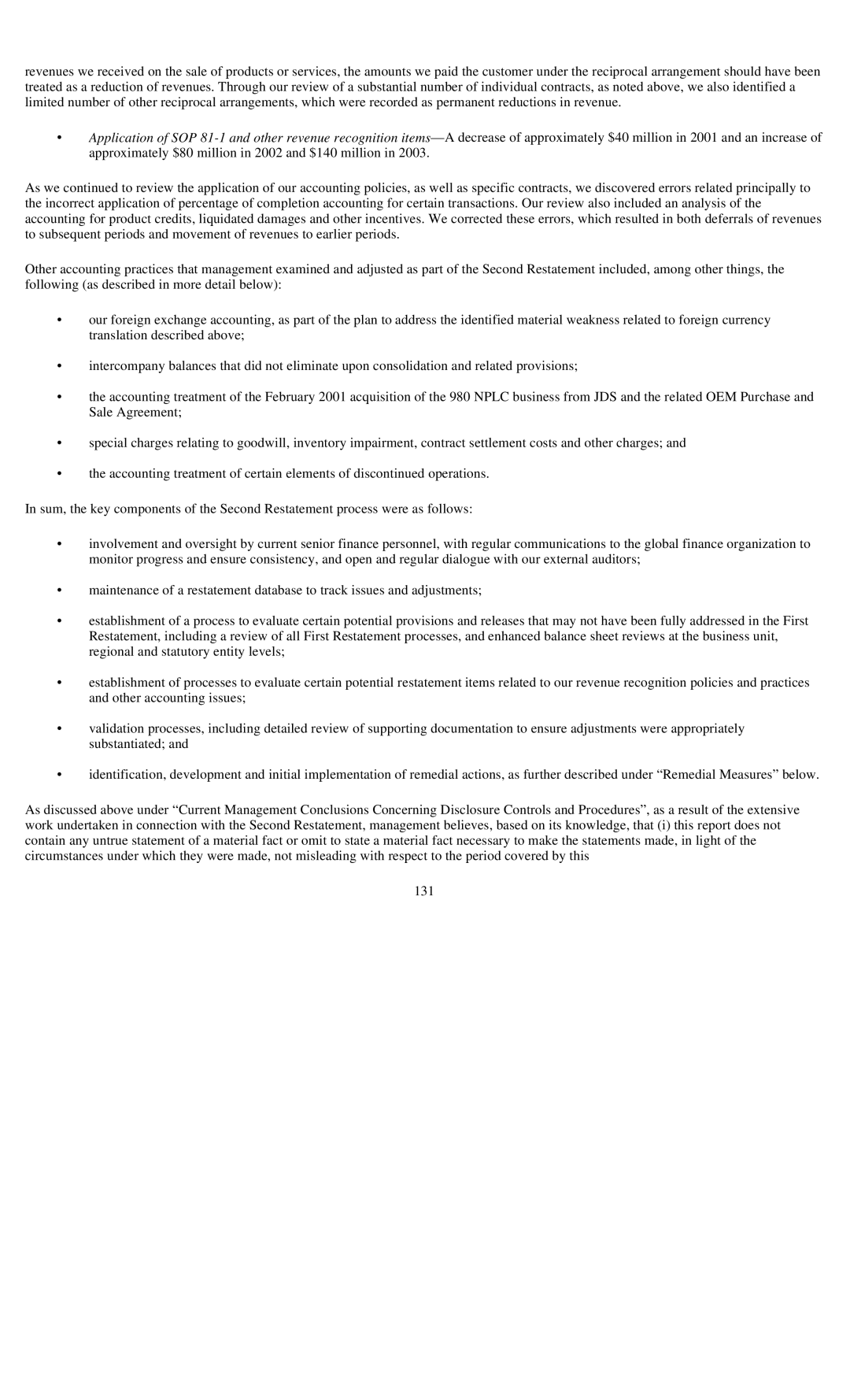revenues we received on the sale of products or services, the amounts we paid the customer under the reciprocal arrangement should have been treated as a reduction of revenues. Through our review of a substantial number of individual contracts, as noted above, we also identified a limited number of other reciprocal arrangements, which were recorded as permanent reductions in revenue.
•Application of SOP
As we continued to review the application of our accounting policies, as well as specific contracts, we discovered errors related principally to the incorrect application of percentage of completion accounting for certain transactions. Our review also included an analysis of the accounting for product credits, liquidated damages and other incentives. We corrected these errors, which resulted in both deferrals of revenues to subsequent periods and movement of revenues to earlier periods.
Other accounting practices that management examined and adjusted as part of the Second Restatement included, among other things, the following (as described in more detail below):
•our foreign exchange accounting, as part of the plan to address the identified material weakness related to foreign currency translation described above;
•intercompany balances that did not eliminate upon consolidation and related provisions;
•the accounting treatment of the February 2001 acquisition of the 980 NPLC business from JDS and the related OEM Purchase and Sale Agreement;
•special charges relating to goodwill, inventory impairment, contract settlement costs and other charges; and
•the accounting treatment of certain elements of discontinued operations.
In sum, the key components of the Second Restatement process were as follows:
•involvement and oversight by current senior finance personnel, with regular communications to the global finance organization to monitor progress and ensure consistency, and open and regular dialogue with our external auditors;
•maintenance of a restatement database to track issues and adjustments;
•establishment of a process to evaluate certain potential provisions and releases that may not have been fully addressed in the First Restatement, including a review of all First Restatement processes, and enhanced balance sheet reviews at the business unit, regional and statutory entity levels;
•establishment of processes to evaluate certain potential restatement items related to our revenue recognition policies and practices and other accounting issues;
•validation processes, including detailed review of supporting documentation to ensure adjustments were appropriately substantiated; and
•identification, development and initial implementation of remedial actions, as further described under “Remedial Measures” below.
As discussed above under “Current Management Conclusions Concerning Disclosure Controls and Procedures”, as a result of the extensive work undertaken in connection with the Second Restatement, management believes, based on its knowledge, that (i) this report does not contain any untrue statement of a material fact or omit to state a material fact necessary to make the statements made, in light of the circumstances under which they were made, not misleading with respect to the period covered by this
131
